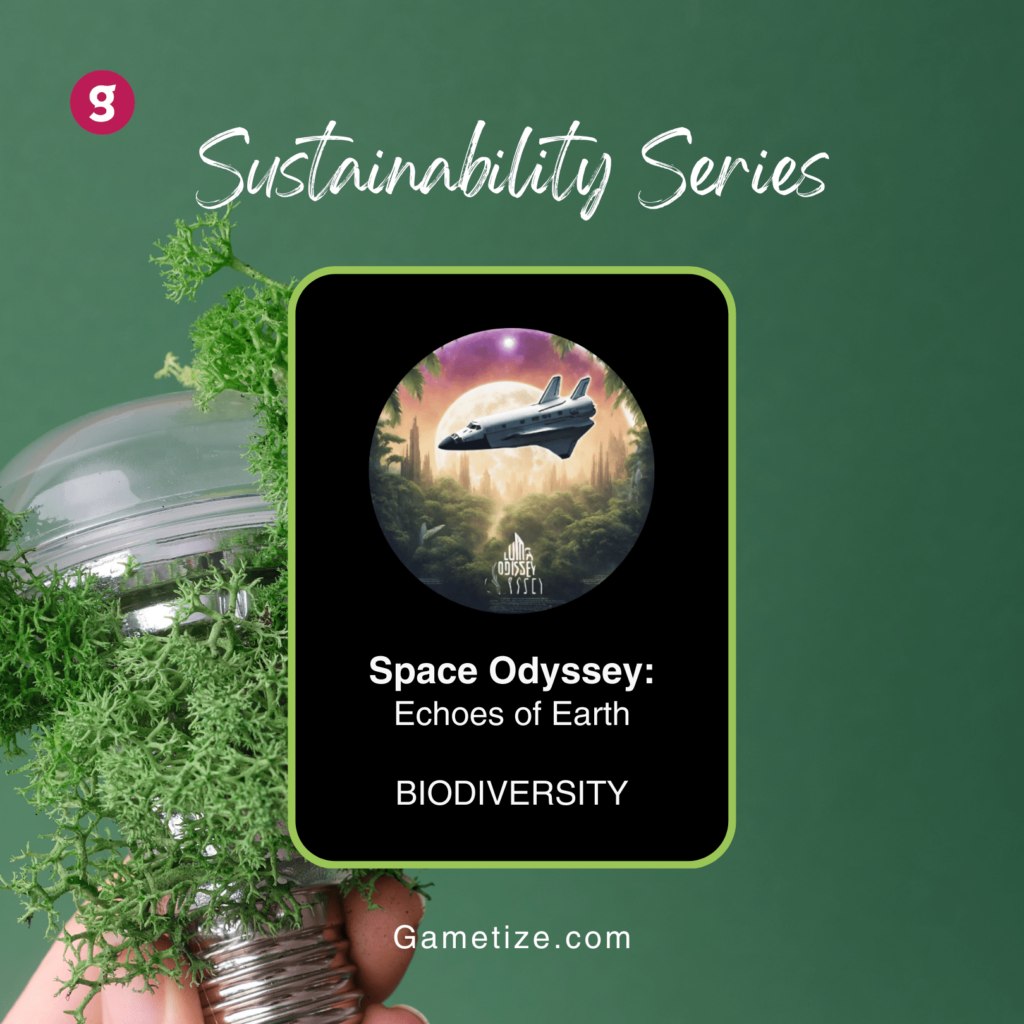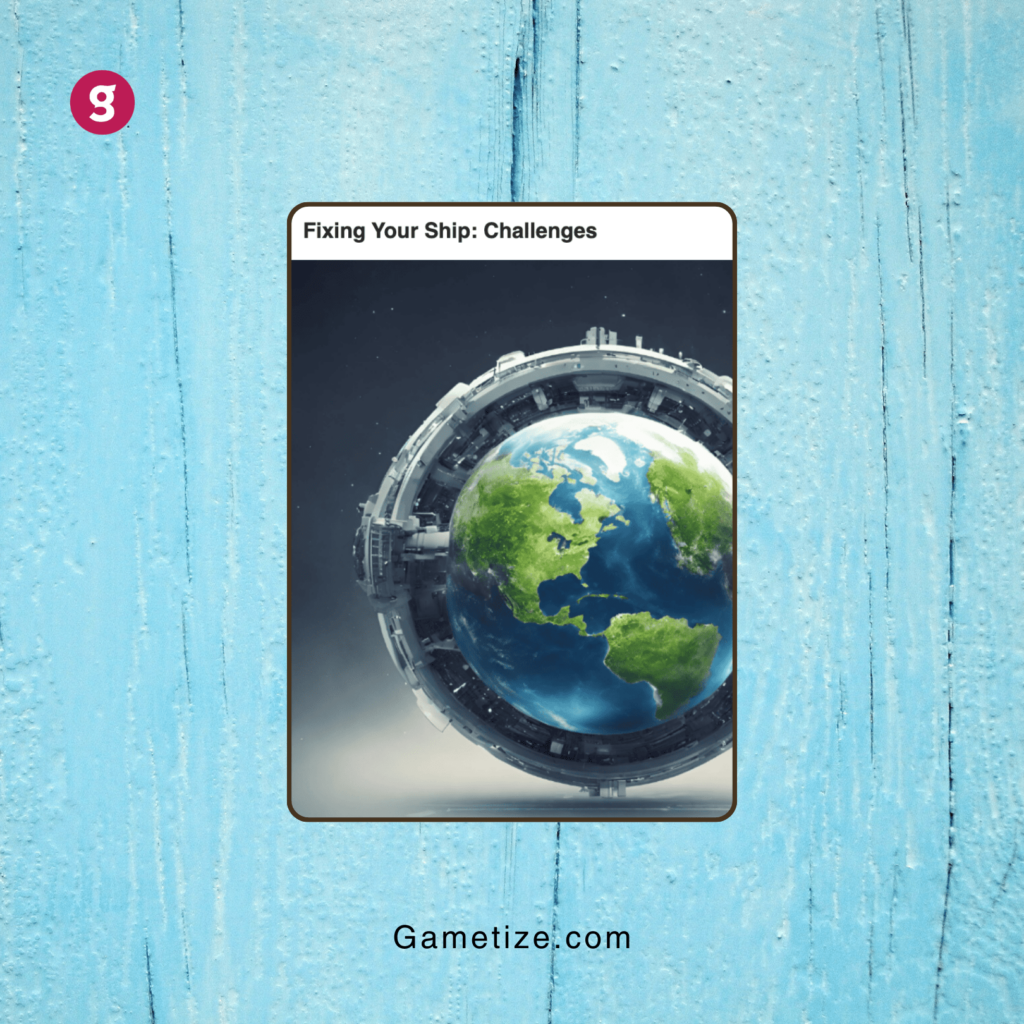Sustainability Series: Space Odyssey: Echoes of Earth
1. Highlight the 6D playbook
Defining our problem statement was a challenging task, as sustainability is a complex topic that encompasses a wide range of materials. Initially, we all had different ideas. Nevertheless, we managed to reach a consensus after listening to each individual’s input and unanimously voted for our current problem statement. Once we determined our problem statement, the next challenge was to ensure that we established the right goals to align with it. During this process, one of the members assumed a leadership role and guided the process, leveraging her experience with our target age group, which made her more knowledgeable in this aspect.
Moving on to the target audience’s behaviour and emotions, as a group, we decided to assign this task to two individuals who would collaborate on it. Subsequently, we would discuss it as a team and provide constructive feedback to enhance it. Given our well-defined problem statement, creating the player profile aligned seamlessly with our goals. In our opinion, the mechanics and process section is the most complex yet crucial part of the project. We recognized that this section requires a significant amount of content. To address this, we chose to create three main components for our content structure, leading us to divide our team into three sub-teams.
During the creation of our 6D playbook, we evenly distributed tasks among our team members. Once each of us completed our respective assignments, we held discussions where team members presented their work, conducted detailed reviews of each component, and received feedback and insights from one another. This approach significantly streamlined our project and led to a more creative end result. Lastly, leveraging our high-quality content and well-defined project structure, we found that diagnosing our strategy using the scorecard was both helpful and informative.
2. Addressing a real world challenge
From our secondary research, we found that a lack of biodiversity awareness was the leading cause of biodiversity loss. In Singapore, the National Parks Board (NParks) has various initiatives incorporated within the education system, such as “Biodiversity Week” for schools and “Greening Schools for Biodiversity,” which include activities for students to plant native, biodiversity-attracting plants within their school compounds. While these initiatives exist, they are often confined to the school environment, potentially limiting students’ exposure to the broader biodiversity experiences that nature reserves or parks could provide.
We believe that more can be done to raise awareness of biodiversity and address the root causes of biodiversity loss. This offers an opportunity to engage young students who are still impressionable (Gwon & Jeong, 2018). Children and youth play crucial roles in preventing the total loss of biodiversity and natural resources (Morar & Peterlicean, 2012). Educating them at an early age can enhance their perspective and turn them into advocates for biodiversity through active involvement in conservation and the protection of natural resources (Šorytė & Pakalniškienė, 2019).
Through gamification, we aim to enhance the process of learning about biodiversity by incorporating challenges, quizzes, leaderboards, and interactions with nature. We have confidence in the effectiveness of this approach, supported by research indicating that gamification, as demonstrated by Bevins and Howard (2018), has the potential to enhance quiz performance, ultimately aiding students in better absorption of the content.
We anticipate that the challenge and leaderboard features will motivate students to actively engage in learning, resulting in a deeper understanding and improved retention of information. These challenges involve daily activities aimed at instilling habits in students and their households. Students will upload their completed challenges on Gametize, and teachers will validate the submissions. Additionally, there is a section where students must visit nature trails and complete challenges based on their observations. Our objective is to nurture a greater appreciation of biodiversity and enhance their understanding of their role in both biodiversity loss and conservation.
4. Learnings and reflection on the project and the issue/cause
Through the first few lessons our team learned the importance of qualities, such as flexibility and a strong internal locus of control, which is crucial to be an effective leader. A challenge we encountered during our project was the limitation of resources and technological capabilities. While we recognised the potential of augmented and virtual reality tools to enhance the educational experience for students, our platform lacked this function, and we had limited experience in creating such tools. Instead of giving up on the idea entirely, we explored alternative approaches and decided to engage students by sharing biodiversity information in nature trails through images and fun facts to keep it engaging.
We also discovered the advantages of a self-managed team when we quickly recognized that each team member possesses unique skills and abilities that can benefit the team in various ways. By organising ourselves as a self-managed team with a system of rotating informal leaders for different tasks, each team member’s roles were interchangeable and flexible, allowing us to leverage our team’s diversity effectively. Furthermore, we found that forming subgroups for each task empowers each member by fostering trust and prevents social loafing, as each person or subgroup is responsible for a specific task
Finally, we learned the importance of not avoiding conflict. Initially, we tried to avoid stepping on each other’s toes, and when disagreements arose, we often used either an avoiding or an accommodating conflict style. While it made sense in the short run, we realised that, in the long term, it hindered our group’s performance. We accepted that this approach was counterproductive, and after our lesson on conflict management, we collectively decided to adopt the negotiating and collaborating conflict style. When conflicts arose, we assessed the situation and determined the most appropriate style. Ultimately, we observed an increase in our group’s productivity, as conflicts were resolved more efficiently when needed, and no member was left on the losing end of a conflict. In conclusion, we learned to address conflicts in a functional manner, enhancing productivity while maintaining strong relationships within the team.
1. Play the game first.
2. Use the Template game for your own initiatives.
Credits: [AY2023/24] G4 Team 6 – Teresa Jasmine Amaris, Lim Jun Xian Caleb, Vidya Vaishnavi Suppiah, Chan Wai Wen, Justin Kenly, Wan Sheng Fung Kaelan, Aloysious Lim Shao En, Jarred Tan Jing Xiang
Reference
Bevins, K. L., & Howard, C. D. (2018). Game mechanics and why they are employed: What we know about gamification so far. Issues and Trends in Educational Technology, 6(1). https://doi.org/10.2458/azu_itet_v6i1_bevins.
Cabello, C., Abadiano, M., Mabitad, A., Pulma, D., & Hipe, A. (2021). Gamification in Education: The Motivation-Exploration-Implementation Theory. Turkish Online Journal of Qualitative Inquiry (TOJQI), 12(7), 2356–2369. https://www.tojqi.net/index.php/journal/article/download/4107/2818/4527.
Gwon, S. H., & Jeong, S. (2018). Concept analysis of impressionability among adolescents and young adults. Nursing Open, 5(4), 601–610. https://doi.org/10.1002/nop2.170.
Morar, F. & Peterlicean, A. (2012). The role and importance of educating youth regarding biodiversity conservation in protected natural areas. Procedia Economics and Finance, 3, 1117 – 1121. http://doi.org/10.1016/S2212-5671(12)00283-3.Šorytė, D. & Pakalniškienė, V. (2019). Why it is important to protect the environment: reasons given by children. International Research in Geographical and Environmental Education, pp. 228-241. https://doi.org/10.1080/10382046.2019.1582771.



